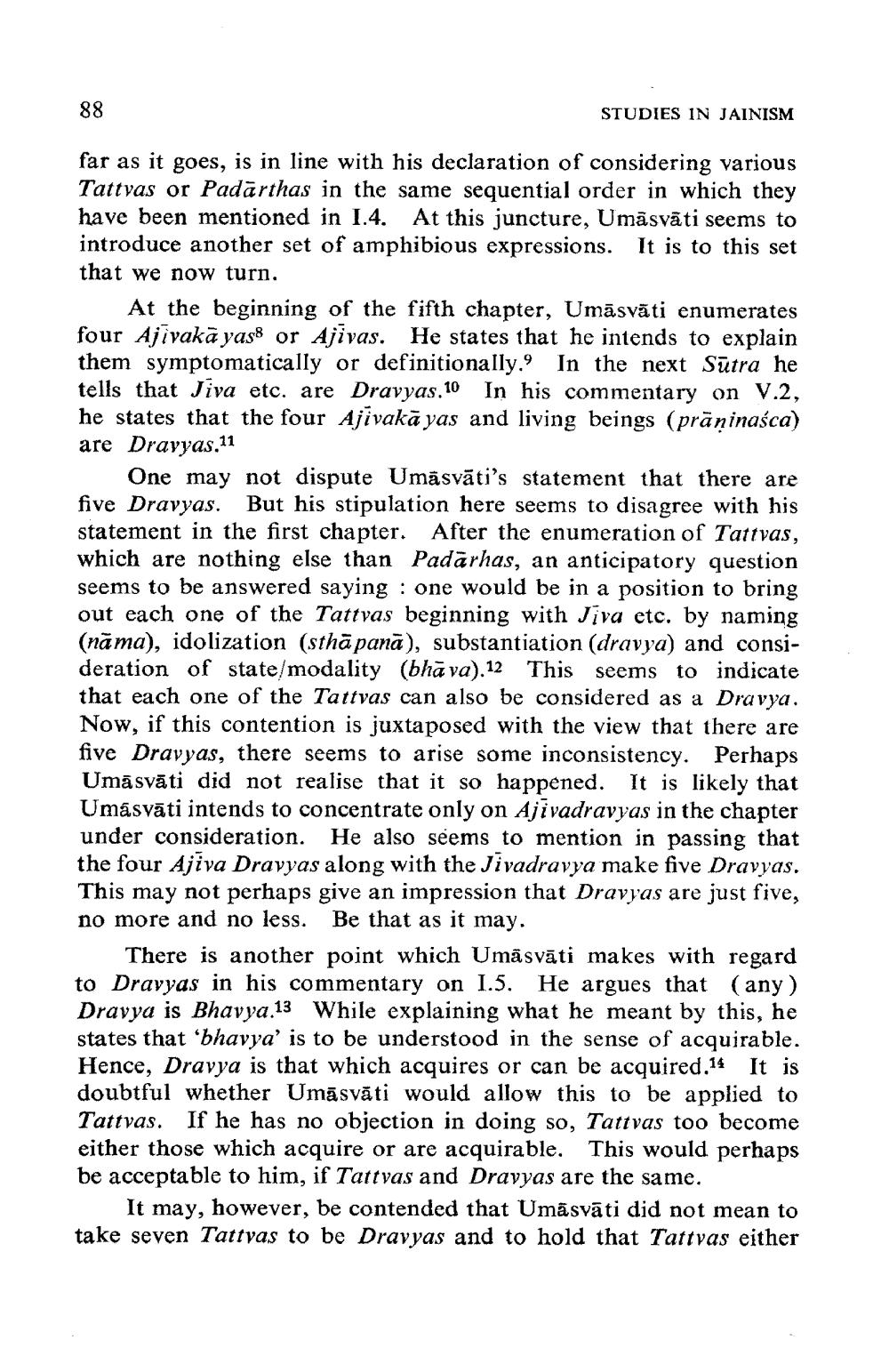________________
88
STUDIES IN JAINISM
far as it goes, is in line with his declaration of considering various Tattyas or Padārthas in the same sequential order in which they have been mentioned in 1.4. At this juncture, Umāsvāti seems to introduce another set of amphibious expressions. It is to this set that we now turn.
At the beginning of the fifth chapter, Umāsvāti enumerates four Ajivaka yass or Ajivas. He states that he intends to explain them symptomatically or definitionally. In the next Sūtra he tells that Jiva etc. are Dravyas.10 In his commentary on V.2, he states that the four Ajivakā yas and living beings (prāņinaśca) are Dravyas 11
One may not dispute Umāsvāti's statement that there are five Dravyas. But his stipulation here seems to disagree with his statement in the first chapter. After the enumeration of Tattvas, which are nothing else than Padarhas, an anticipatory question seems to be answered saying : one would be in a position to bring out each one of the Tattvas beginning with Jiva etc. by naming (nāma), idolization (sthā panā), substantiation (dravya) and consideration of state/modality (bhāva).12 This seems to indicate that each one of the Tattvas can also be considered as a Dravya. Now, if this contention is juxtaposed with the view that there are five Dravyas, there seems to arise some inconsistency. Perhaps Umāsvāti did not realise that it so happened. It is likely that Umāsvāti intends to concentrate only on Aji vadravyas in the chapter under consideration. He also seems to mention in passing that the four Ajiva Dravyas along with the Jivadravya make five Dravyas. This may not perhaps give an impression that Dravyas are just five, no more and no less. Be that as it may.
There is another point which Umāsvāti makes with regard to Dravyas in his commentary on 1.5. He argues that (any) Dravya is Bhavya.13 While explaining what he meant by this, he states that 'bhavya' is to be understood in the sense of acquirable. Hence, Dravya is that which acquires or can be acquired.14 It is doubtful whether Umāsvāti would allow this to be applied to Tattvas. If he has no objection in doing so, Tattvas too become either those which acquire or are acquirable. This would perhaps be acceptable to him, if Tattvas and Dravyas are the same.
It may, however, be contended that Umāsvāti did not mean to take seven Tattvas to be Dravyas and to hold that Tattvas either




